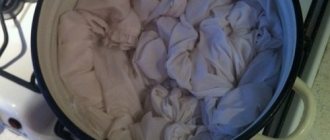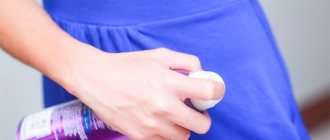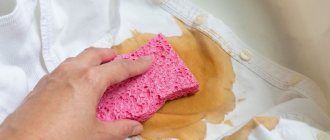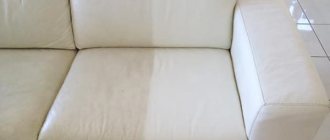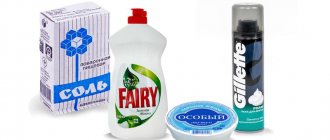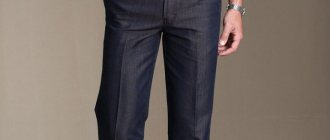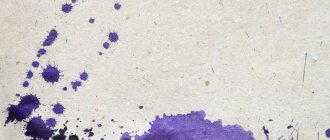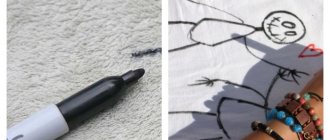Every second person on earth at least once in their life has encountered the nuisance of chewing gum sticking to their favorite item, causing a huge unpleasant feeling of resentment and annoyance. The appearance of such a problem can occur anywhere: in any public institution or transport, at a school, institute, cafe or in your own home. Removing chewing gum from clothes is not as easy as it might seem at first glance, because it leaves behind an unpleasant stain that can only be removed without problems only by dry cleaning, but this will require a certain amount of financial costs. In this review, we’ll take a closer look at how to remove chewing gum stains from clothes at home using improvised means.
Using ice or other cooling agent
Almost any fabric can be cleaned using ordinary ice cubes. To do this, it is recommended to lay the contaminated area of the damaged wardrobe item on a flat, straight surface and straighten it. Place ice cubes on the gum stain. As soon as the “toffee” freezes, it will begin to crumble, so it will be enough to use any handy object: a knife, tweezers or a nail file to pry the edge of the frozen gum and peel it off the surface of the clothing. Small crumbs can be easily removed using a special brush for cleaning things.
You can also remove gum using the following means:
- Freser cooling aerosol, used to reduce the temperature of various microcircuits, or Isemix, used for injuries and bruises to create an analgesic effect. It is simply recommended to spray them onto the contaminated area and break off frozen particles of chewing gum.
- A freezer in which you need to place the contaminated product for several hours, and then get rid of the frozen “trouble.”
- You can also use specialized products for removing chewing gum in the form of sprays that have a cooling effect. The most effective of which is Chewing Gum Removers. It should also be sprayed onto the stain and left to harden for a short period of time. Under the influence of the spray, the chewing gum will begin to harden and break, so it will be easy to remove with any available object. The main thing: follow the recommendations of the attached annotation, and any jeans, trousers, dress or blouse will again become as before.
It is very important: when using a knife or tweezers, do not damage the tissue structure.
Household chemicals
For those who do not like experiments with their clothes and prefer to use proven chemistry, we have selected the most effective professional products for cleaning chewing gum from clothes:
- Premiere Chewing Remover is an expensive but effective spray for removing sticky stains on all types of fabrics. It is colorless and odorless and leaves no traces. Works instantly;
- Pramol-Chemie AG Gumex is a liquid solution for removing sticky stains. Suitable for dense and fleecy fabrics. With its help, you can clean clothes from chewing gum in just a minute;
- Primera Break Up - can be used to remove chewing gum from furniture and carpets. Smells pleasant and leaves no residue;
- AXEL-9 Anti-gum is a product for removing sticky stains on fabric. Works quickly and efficiently. Leaves no traces and is practically odorless;
- MULTI-PLAST - used for any surface and different types of fabric. The product belongs to professional solvents.
- Exol D 60 is an effective and universal stain remover;
- Chewing Gum Remover Gel is a stain remover in gel form. It is highly effective, leaves no residue, and removes dirt in a couple of minutes;
- Sapur Freeze is a freezing aerosol. Effectively fights stuck chewing gum and allows you to quickly remove dirt.
Premiere Chewing Remover
Pramol-Chemie AG Gumex
Primera Break Up
AXEL-9 Anti-gum
MULTI-PLAST
Exol D 60
Chewing Gum Remover Gel
Sapur Freeze
Stain Remover is a universal product that is sold in any store and many housewives have at home. How to remove chewing gum from clothes using it? In the case of white clothes, you can use regular white. It is necessary to check in advance the reaction of the tissue to a particular product by treating a small area in a hidden place. After treatment with this product, the chewing gum will immediately disappear. Several procedures may need to be performed.
Chewing gum stuck to your clothes? Don't know what to do? There is no need to throw away the soiled item; it is enough to know how to clean chewing gum correctly. We talked about the most effective and proven ways to combat this problem and hope that they will help you.
Chemicals
You can clean traces of chewing gum using the following chemicals:
- acetone;
- alcohol or vodka;
- toluene;
- highly purified gasoline, which is mainly used for refilling lighters;
- cosmetic nail polish remover.
These products can remove complex stains from clothes with a high density: from a coat, sheepskin coat or fur coat. You can also clean the carpet, sofa, chair and other upholstered furniture.
It is very important: before using such a composition, do a small test on an inconspicuous area of the fabric to make sure that the content of aggressive components in the product used will not harm the tissue structure or change its color. Then you need to apply a small amount of the selected product to the stain, wait 10-12 minutes, scrape off the gum and wash the product in a convenient way.
It should be remembered that acetone, toluene and gasoline are not recommended for removing stains from velvet and corduroy, as well as for black and multi-colored fabrics, since these aggressive components contribute to discoloration.
How to choose the right cleaning method
Methods for cleaning chewing gum are divided into 4 types:
- cold;
- hot;
- chemical;
- mechanical.
The use of one or another cleaning method depends on the properties of the material, type of paint and area of contamination. Some delicate materials are not recommended for heat treatment.
Silk, chiffon, wool and satin materials cannot be processed using hot methods. To remove chewing gum from their surface, use special sprays, cooling aerosols, or apply ice.
Cold cleaning methods are applicable in many cases, however, they are only effective in the case of fresh, small stains. Old sticky masses that occupy a large area can rarely be removed by freezing and applying ice.
Not all chemicals are suitable for susceptible materials. Harsh products can leave a faded area on velvet, corduroy or patterned fabrics. Before use, any product must first be tested on the reverse side of the product. If no stains remain, then apply directly to the contaminated area of the material.
Using Chewing Gum
A fresh stain can be removed with carefully chewed chewing gum. Chewed gum should be stuck to the chewing gum on pants or other clothing and thereby come off along with the particles of sticky “taffy.” If you don’t have chewing gum on hand, you can use tape, sticking it to the problematic mark and quickly removing all the “bubble gum” particles.
Freezing clothes to remove gum
One of the most effective means of removing chewing gum from clothes is frost. If you need to remove gum from your item and it hasn't been stuck on for too long, then this method will work well for you.
- Simply place your clothes in the freezer and leave them there for a day.
- After this, remove and tear off the gum from your clothes, after rubbing the clothes first.
If some parts don't want to come off, you can use a butter knife.
Cold and hot water
You can use cold water using the following method: turn on the tap with ice water and place the area on the clothing with the problem stain under the stream. Under the influence of cold temperatures, a local spot will begin to color and lag behind the fabric structures of the clothing. Residual bubble gum particles can be removed using a cleaning brush.
Before using hot water, you should study the information on the clothing label: if the fabric can be washed at high temperatures, then the contaminated item should be poured with boiling water and left until the “dried toffee” has completely softened. Then it will be easy to remove it with a brush.
Features of processing different fabrics
The selection of the method depends on the type of fabric - the composition is indicated on the label.
Cotton.
Plain clothes made of cotton fabric can be cleaned by exposure to temperature - boiling, freezing. Treatment with vinegar and alcohol is acceptable. For dyed fabrics and materials with prints, it is better to choose a more gentle method - steam treatment or hair dryer.
Linen.
Linen clothing is resistant to wear, so it can easily withstand treatment with high and low temperatures, vinegar, and alcohol. However, if the composition contains impurities of synthetics or other material, then it is better to choose a more delicate cleansing or try the method on the seams.
Synthetics.
These types of fabric include polyester, polyamide, viscose, fleece, nylon and many others. Synthetic materials can react unpredictably to temperature influences. Therefore, mild products, such as liquid soap, are used for cleaning.
Wool.
This is also a capricious material, and high temperatures can hopelessly damage the item. It is better to use freezing or alcohol.
Leather.
Items made from genuine leather are easier to clean with cold. You can wash away traces with liquid soap or powder. But you can’t freeze faux leather clothes, otherwise they may lose their shine. Chewing gum can be wiped off with a sponge dipped in soapy water or removed with tape. The main thing is not to use abrasives, chlorine-containing substances or acetone, so as not to damage the paint.
Jeans.
Denim clothing made from natural fabric can withstand any temperature cleaning, as well as exposure to aggressive substances - gasoline, kerosene, alcohol.
Velor, suede, nubuck.
Materials with a fleecy surface require a special approach. The best cleaning option is freezing with further brushing.
Use of acetic acid
Vinegar can be found in every good housewife's home, because this product is used not only for preparing various dishes, but also saves from many different contaminants. It is only important to know that using vinegar is not recommended for processing:
- corduroy;
- silks;
- chiffon;
- satin and other delicate types of fabrics.
Let's look at how to remove traces of chewing gum on products made from fairly durable materials:
- Pour some vinegar into an iron container and heat it over a fire.
- Dip your toothbrush in hot vinegar.
- Then rub the affected area until the unfortunate spot completely disappears.
- If the trace is completely eliminated, then the item should be washed in the usual way to eliminate the vinegar aroma. But if the contamination did not give in on the first try, then it should be repeated.
Hairdryer
If you are thinking about how to remove chewing gum from your pants, we suggest using a good method - warm air. We take a hairdryer in our hands, heat the chewing gum a little with a warm stream of air, and when the chewing gum gets wet, you can clean the chewing gum with a simple paper napkin. We collect the soaked gum with a napkin and remove it. If there is a mark left on the fabric, heat the problem area with a hairdryer again and wipe off the remaining gum with a clean cloth. Try not to hold the hair dryer too close to the fabric if the fabric is thin, otherwise you may damage the fabric
Peanut butter
Vegetable oils have the ability to reduce the adhesion of chewing gum to the fibers of the fabric structure of clothing. Peanut oil is the most effective. But when using it, you should exercise maximum care and attention, since this delicious product has a greasy consistency, and if it gets on a clean area of clothing, a greasy stain may remain. To eliminate the “toffee”, you need to smear it with peanut butter using a cotton swab, and then scrape it off with the back of a knife or a nail file.
Iron
Many people prefer this method over all others. To begin with, the soiled item must be turned inside out, and an unnecessary piece of any natural material, cardboard, newspaper or blotting paper must be placed under the contaminated area. Set the iron to the wool setting and press it onto the stained area. In this case, you do not need to make any movements on the fabric itself, otherwise the chewing gum will only blur. As a result of the temperature effect, the chewing gum should remain on the underlying material. You should not press the iron to the front side of the product, even through auxiliary material - this can lead to the growth of the stain or even damage to the iron. After the chewing gum is finished, a small stain will remain in its place, as if from grease. It can be washed with dishwashing liquid.
